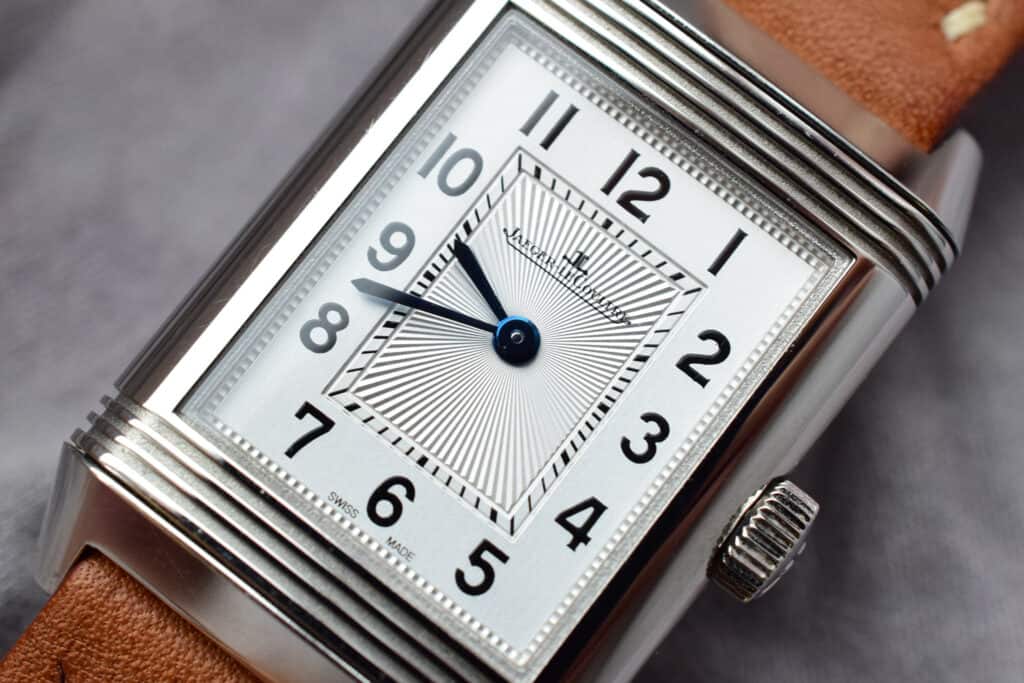By Alan Wood
Vintage watch expert discusses the allure of vintage hand-wound watches & explains his favourite dress, pilot, chronograph, and Art Deco watches from yesteryear.

Alan Wood, founder of Vintage Gold Watches, is a trusted vintage watch dealer with over 35 years of private collecting experience. His deep knowledge and infectious passion for mechanical timepieces have earned him a highly respected reputation in the industry. Vintage Gold Watches, established in 2011, has become a reputable dealer thanks to Alan’s expertise and a skilled team of restorers. Alan’s love for vintage watches started as a young Mechanical Engineer and grew into an obsession. He believes the finest watches were made in the 1950s, 60s, and 70s, and he is thrilled to share them with others.
It may be an eye-opener to some that hand-wound watches are still being produced. But why bother with a manual-wound watch when an automatic watch or a quartz watch does all the work for you?
The Allure of Vintage Hand-Wound Watches
Within many of these fine watches lie legendary hand-wound movements such as the Patek Philippe Caliber 89 and the A. Lange & Söhne L901.0. These movements have left an indelible mark on the watch industry. These meticulously crafted calibres represent the pinnacle of horological innovation and tradition, continuing to shape and inform the art of watchmaking.
If you are fascinated by the micro-mechanics in a mechanical watch, a hand-wound watch with a transparent case back allows you to see more of the intricate movement. One of the pleasures of owning a mechanical vintage hand-wound watch is being able to observe the mesmerising inner workings.
Because no rotor is required to automatically wind the mainspring, a hand-wound watch case can be slimmer and more elegant, making them more suitable for more dressy occasions.
In a world increasingly dominated by automation, vintage hand-wound watches stand as a testament to human skill and dedication. Their rhythmic ticking and reliance on human interaction become part of the joy of owning a hand-wound watch, inviting you to become a part of its passage, creating a bridge between the past and the present.
Favourite Vintage Hand-Wound Watches
We invited Vintage Gold Watches owner and vintage watch specialist Alan Wood to comment on his favourite vintage hand-wound watches. This is a man who has cast his eye upon more manual-wind vintage watches than we’ve had hot dinners. Here, he comments on each of his chosen watches in turn.
Vintage Hand-Wound Dress Watches
Manual-wind dress watches epitomise elegance through their intricate designs and slim profiles. Each winding ritual engages with horological artistry, bringing the timepiece to life. These watches unite form and function, a testament to true craftsmanship.Vintage dress watches are often overlooked due to their understated elegance. However, their slim-line design hides an unassuming fully mechanical engine that can offer all manner of complications in a small, refined package.
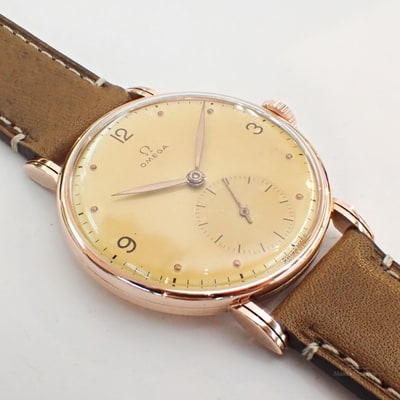
This is an exquisite 1946 Omega Cal.30 T2 PC dress watch in pink gold. The standout feature is its exceptional movement – the renowned Cal.30 T2, a chronometer-grade precision movement with historic triumphs in accuracy trials. Noteworthy attributes encompass the elegantly classic 1940s dial and a splendid 35mm pink gold case, combining to create a truly remarkable timepiece.
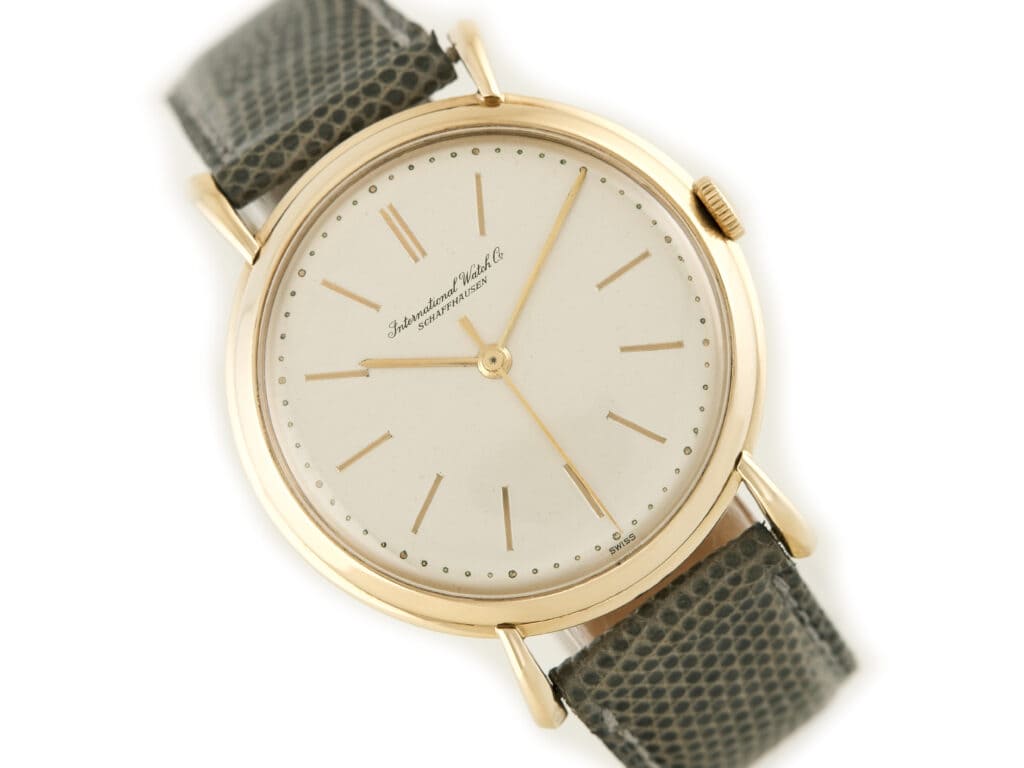
This IWC Cal.89 is a highly impressive piece, not only for its wonderfully elegant dial but also for being oversized at 37mm in diameter. Not to mention the amazingly good condition of this watch, but this is just what lies on the surface. Underneath, we find a truly iconic movement, the Cal.89, which has certainly stood the test of time, remaining in production for both civilian and military use for over 40 years.
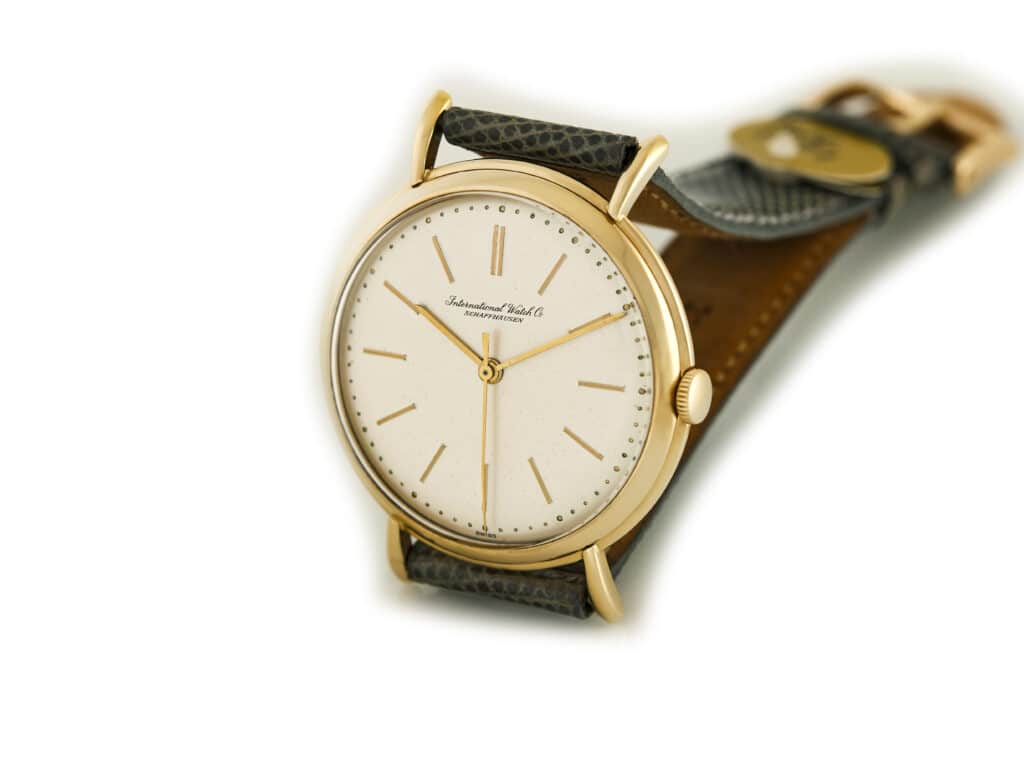
A meticulously restored 1960 Jaeger-LeCoultre gentleman’s hand-wound dress watch in 9ct yellow gold. The dial exudes 1960s elegance with its clean and simple design. The revered Calibre K800/C hand-wound movement boasts impeccable precision and reliability, ranking among JLC’s finest of that era, rivalling Swiss counterparts. Its premium waterproof case enhances practicality, rendering it suitable for both formal occasions and daily wear.
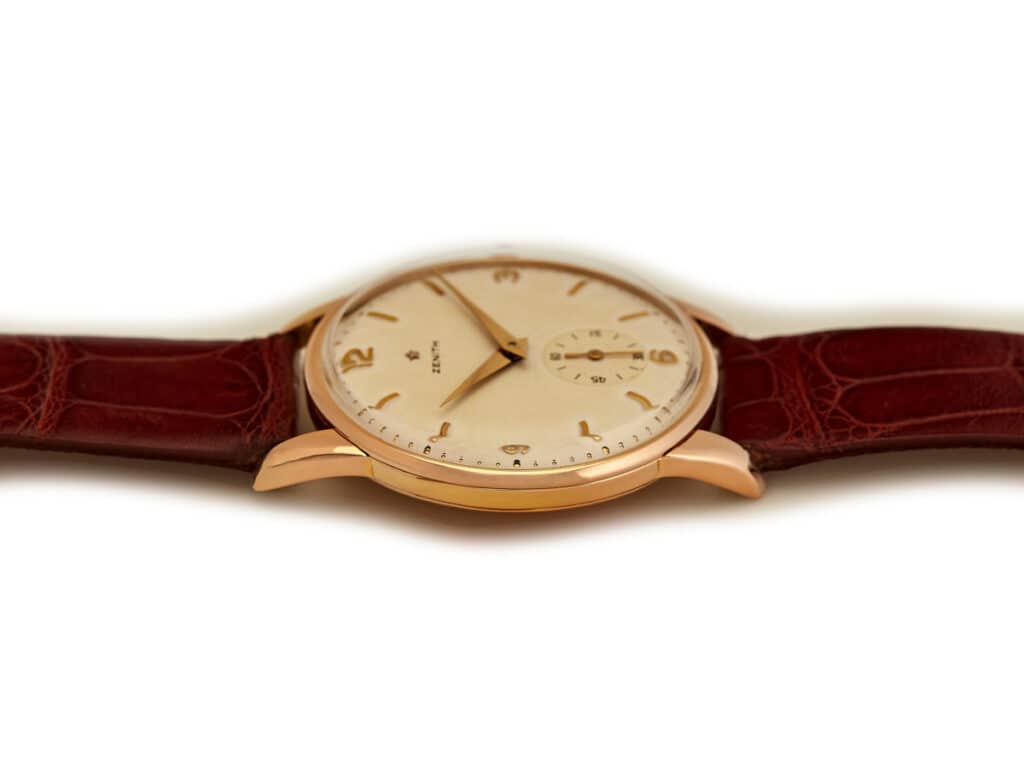
Through the late 1940s and 1950s, Zenith reigned supreme in crafting both technically advanced and commercially successful chronograph wristwatches. Noteworthy is their contribution to Rolex’s Daytona Chronograph. This Zenith Cal.126-6 watch boasts a rare 18ct pink gold case, a generous 36mm diameter, and an impeccably preserved movement. An original Zenith-signed gold-plated buckle further enhances its appeal.
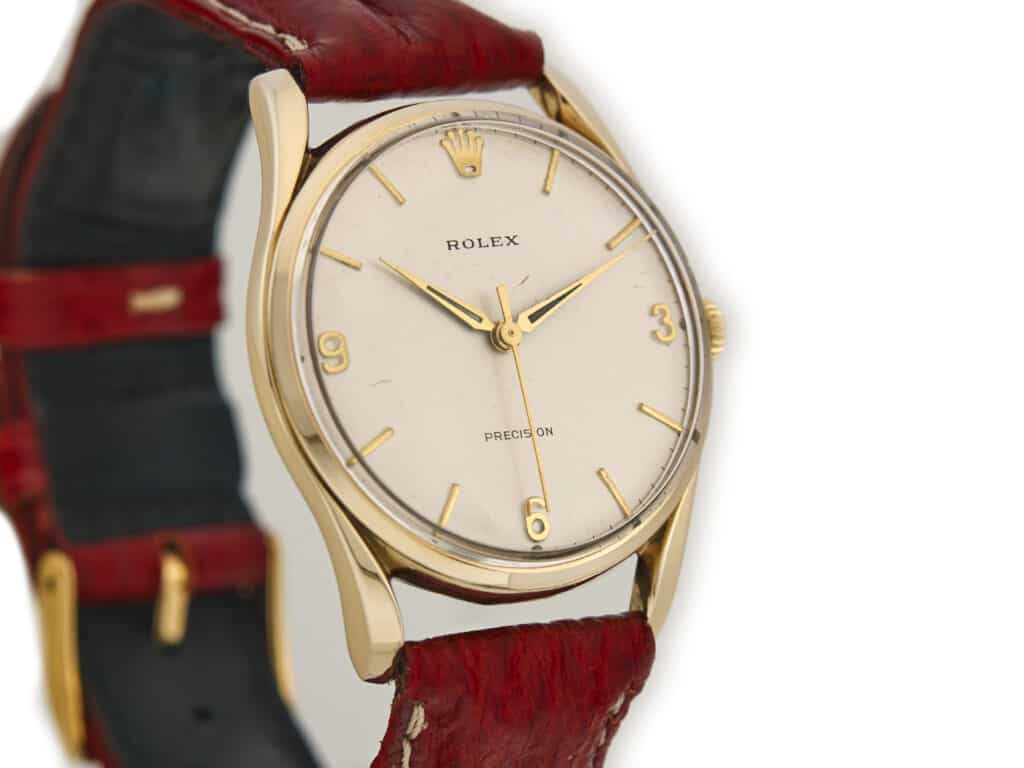
The Rolex Precision is a pristine testament to timeless elegance. This vintage 9ct yellow gold gentleman’s dress watch boasts an untouched, fully original state, highlighted by a silver-white dial adorned with ‘3, 6, 9, 12’ Arabic numerals. Meticulously preserved, it underwent delicate restoration, reviving its near-new splendour. Encased in 9ct yellow gold, the 34mm diameter case, impeccably maintained, reflects a larger dimension for its era, exemplifying superior craftsmanship.
Favourite Hand-Wound Pilot Watches
Hand-wound pilot watches were introduced back to the early 20th century. These hardy timepieces were born from the need for accurate, reliable instruments for aviators navigating the skies during both World Wars.
Legibility was a top priority. Large and distinct Arabic numerals and luminescent hands ensured easy reading even in low-light cockpit conditions. Oversized crowns enabled easy adjustment of the watch while wearing thick leather gloves in the freezing cockpit.
Robust cases and crystals shielded movements from harsh environments, the watches were hand wind in order to sidestep reliance on automatic systems that might fail during a flight. Their enduring appeal lies in their historical significance, timeless design, and mechanical craftsmanship.
Breguet Type XX
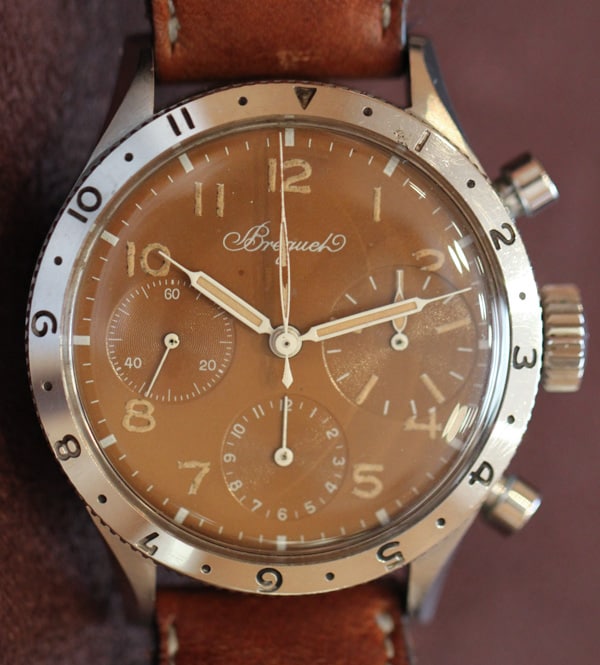
The Breguet Type XX timepieces were provided to the French Flight Test Center, the French Air Force and the Naval Aviation (Aéronautique Navale) until the close of the 1950s. It features large Arabic numerals and chronograph functionality, as required by the French Air Forces Type 20 specification at the time while maintaining the Breguet charm. The Type XX exudes a military cool, combining legibility with a flyback chronograph function.
IWC Mark XI
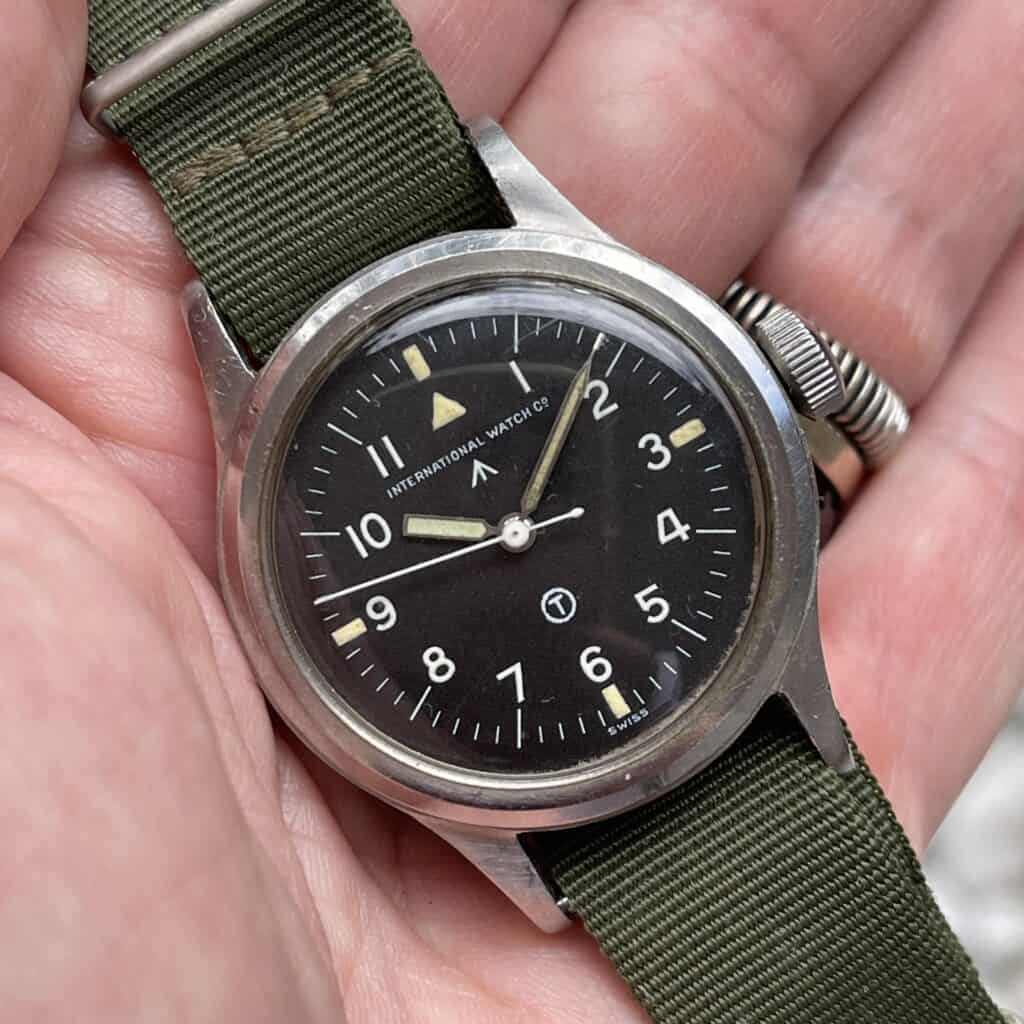
In 1948, the debut of the Mark XI transpired through a collaboration between International Watch Company (IWC) and Jaeger-LeCoultre (JLC), crafting watches aligned with British Ministry of Defence (MoD) standards.
These manual timekeepers prioritised functionality, culminating in enduring classics of horology. The IWC Mark XI, with its simplicity and durability, was a navigational tool for RAF pilots. These timepieces symbolise the enduring bond between horology and aviation, each telling a unique story of exploration and precision.
Favourite Vintage Manual-Wind Chronographs
Hand-wound chronographs, celebrated for their precision and versatility, excel in a diverse range of environments. From the adrenaline-pumping arena of sports to the exacting demands of aviation and beyond, these timepieces prove indispensable.
Their manual winding mechanisms enhance precision, while the chronograph function enables users to measure elapsed time with precision.
Breitling Navitimer Chronograph
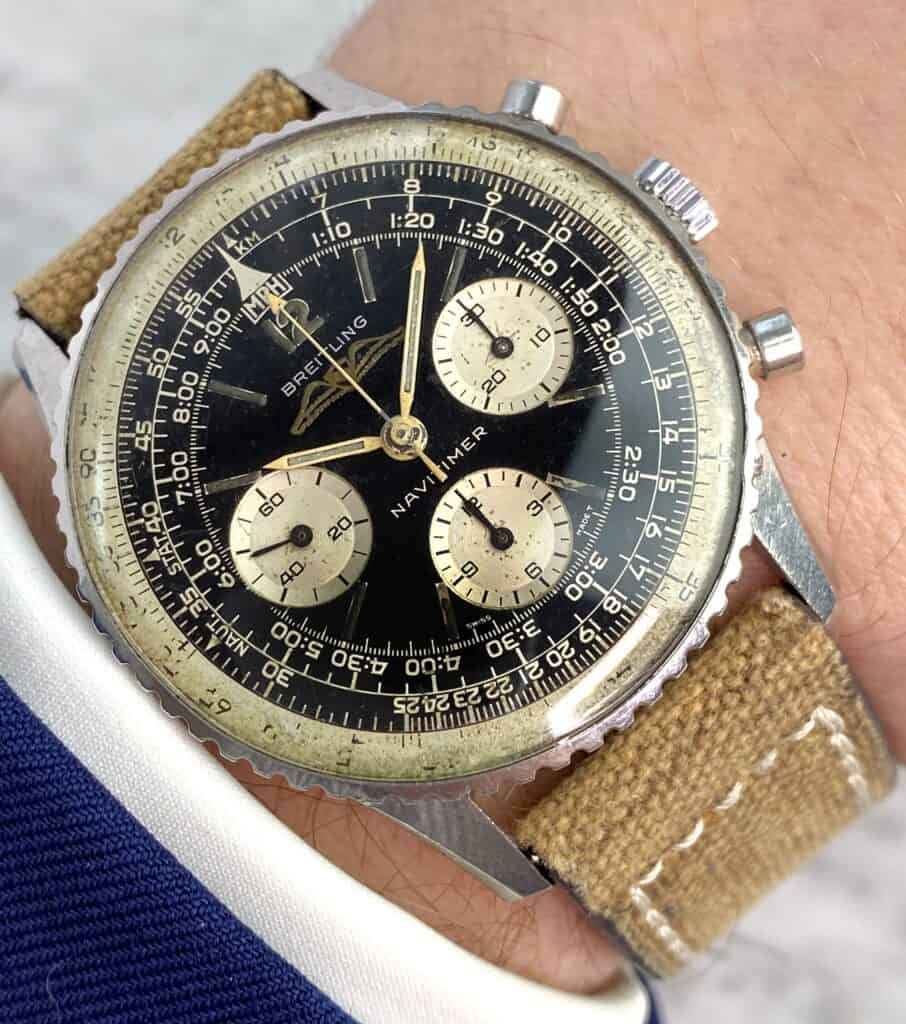
The Breitling Navitimer Chronograph, introduced in 1952, transcends time as an aviation icon. With its distinctive slide rule bezel, it became a vital cockpit tool, embodying precision and aeronautical prowess.
The Omega Speedmaster
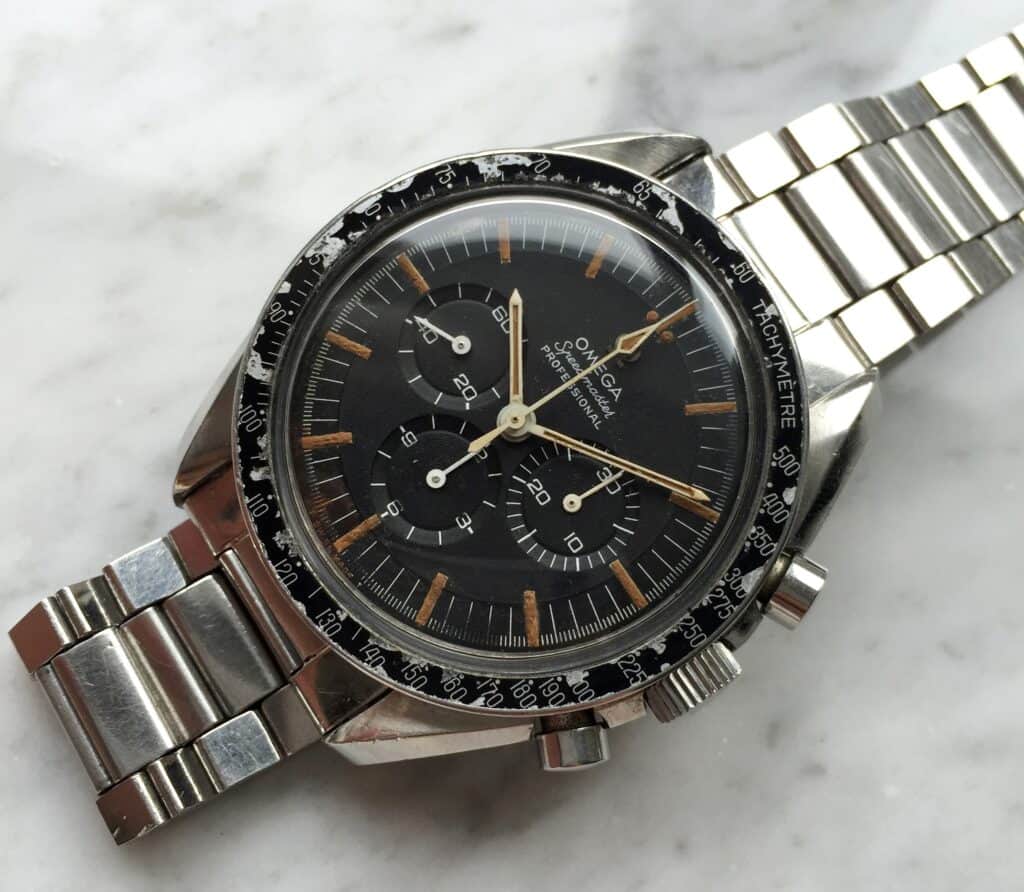
This fabled beauty became renowned as the “Moonwatch,” and earned its place in history by accompanying astronauts to the lunar surface. It remains a hot collectors’ favourite to this day and new editions are snapped up fast, despite the fact no one has landed on the moon since the early 70s.
TAG Heuer Carrera
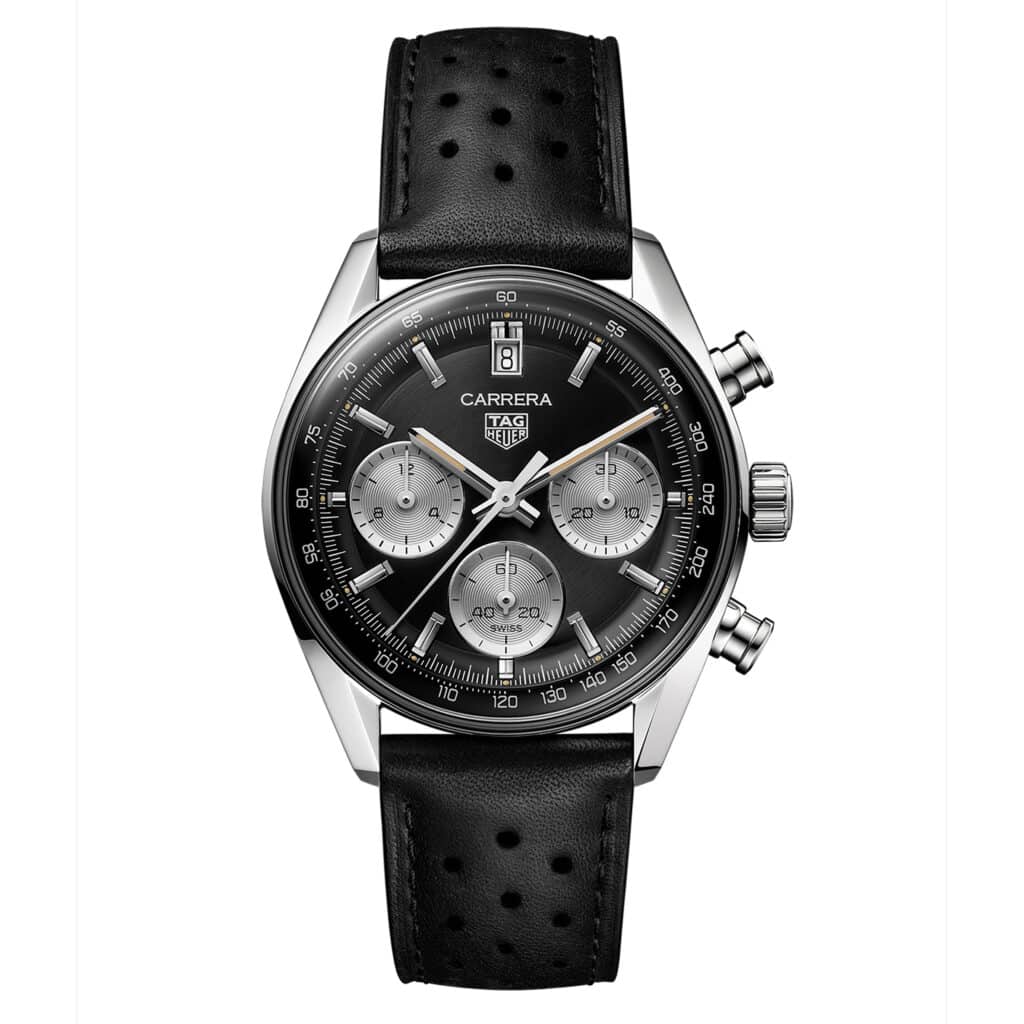
Motor racing enthusiasts rely on hand-wound chronographs which offer exceptional timing precision for track events. Launched in 1963, the TAG Heuer Carrera embodies racing heritage. Named after the Carrera Panamericana, it revolutionised chronograph design with its clean, legible dial and sporty aesthetics, becoming an enduring symbol of speed and style.
Favourite Enamel and Art Deco Vintage Watches
Enamel dials and Art Deco design showcase bold lines, symmetry and intricate detailing. These stand as fine examples of the exquisite craftsmanship and horological elegance of early to mid-20th century watches.
The fusion of Art Deco design and hand-wound functionality captures the spirit of an unforgeable era.
Patek Philippe Calatrava
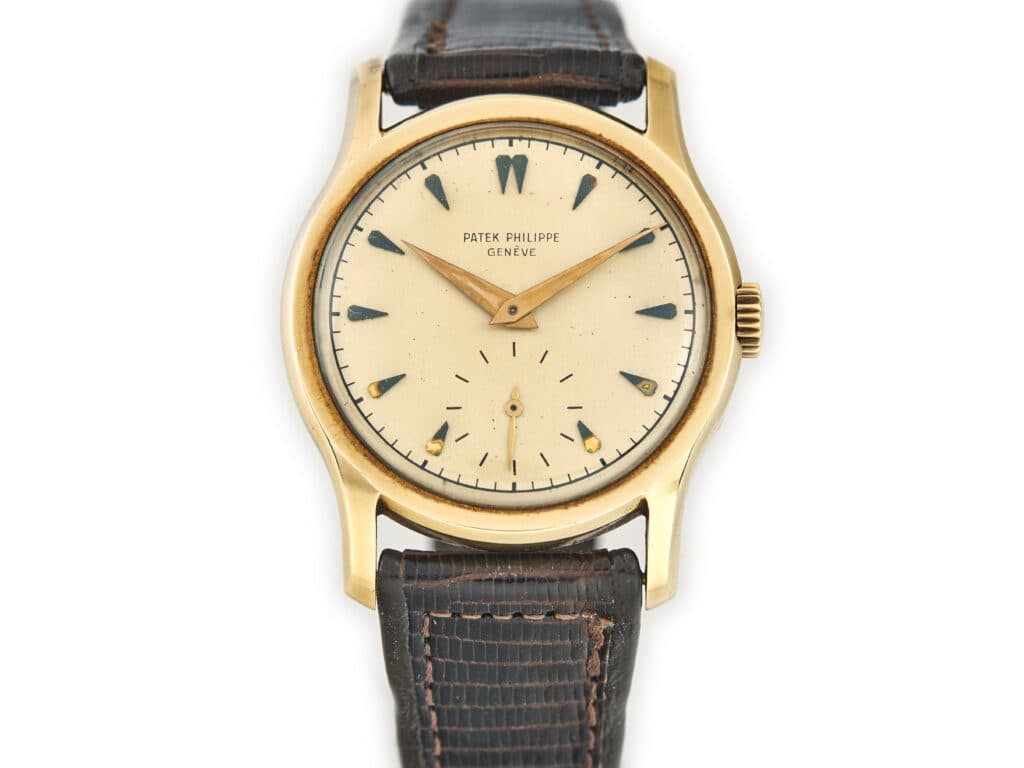
Adorned with a honey dial and gold spearhead hour indices, this Art Deco-inspired masterpiece showcases wonderful craftsmanship. 35mm in diameter, excluding the correct unsigned crown, this was a larger-sized Patek Philippe dress watch for the period while still maintaining its slim dress watch proportions.
Its clean lines, exquisite detailing, and enamel work exemplify timeless elegance.
Cartier Tank Cintrée
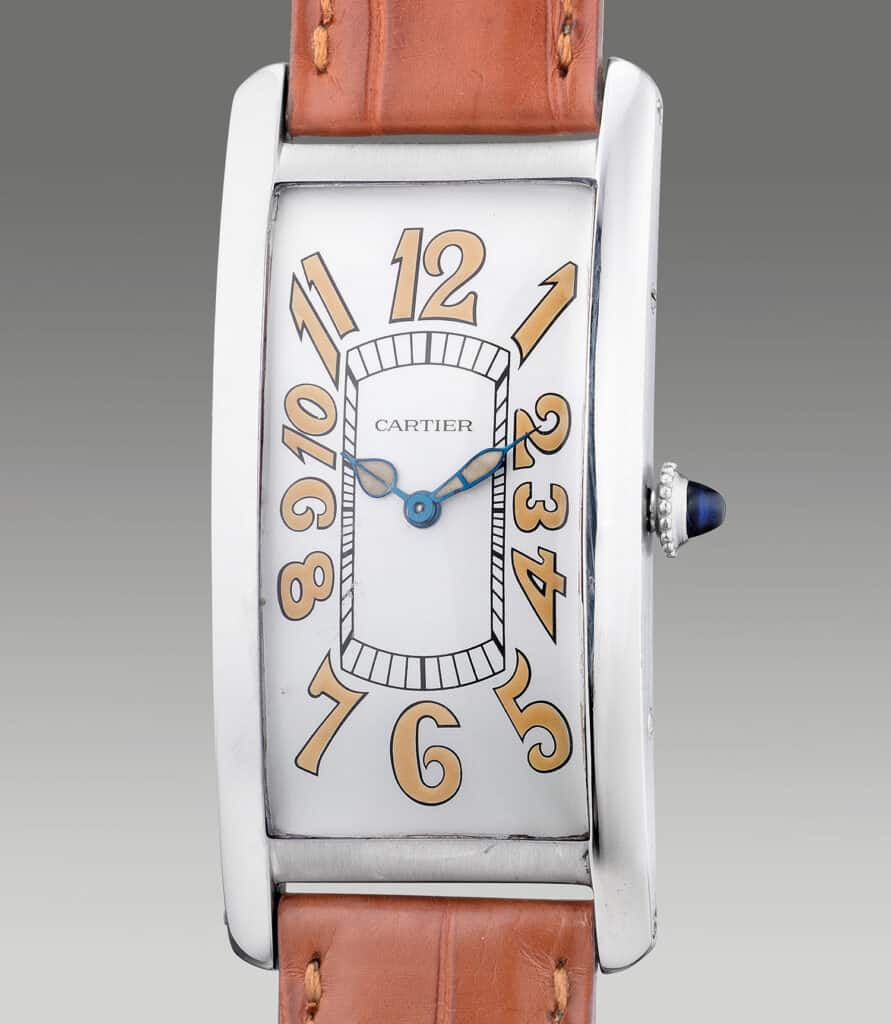
A quintessential Art Deco icon, the Tank Cintrée boasts a delicate enamel dial. Its elongated, curved case and minimalist design evoke the era’s aesthetics, blending mechanical precision with artistic allure. The famous tank design was inspired by the shape of World War 1 tanks.
Jaeger-LeCoultre Reverso
Introduced in 1931, the Reverso was specifically designed to protect the watch from the rigours of playing Polo by reversing it on itself. Its understated but supremely elegant Art Deco contours are groundbreaking, and its reversible casing has elevated it to one of the world’s most identifiable watches.
The Reverso has 50 different calibres, including even quartz, but more than a few of them are manual-winding.
Long Live The Hand-Wound Watch
Within this increasingly automated world, with the younger generation eagerly embracing the smartwatch, the hand-wound watch still shows no signs of disappearing any time soon.
The technical prowess of the hand-wound movement, once under serious threat from the quartz crisis of the 70s and 80s, has not only endured but prospered. Why, when even the manual drive car is disappearing to the automatic electric? Because its charm, reliability, longevity and exquisite finishing continue to set new standards and challenges. Long live the hand-wound watch!
If you would like to receive regular vintage watch news, including our latest stock as it arrives, sign up for our weekly newsletter.


